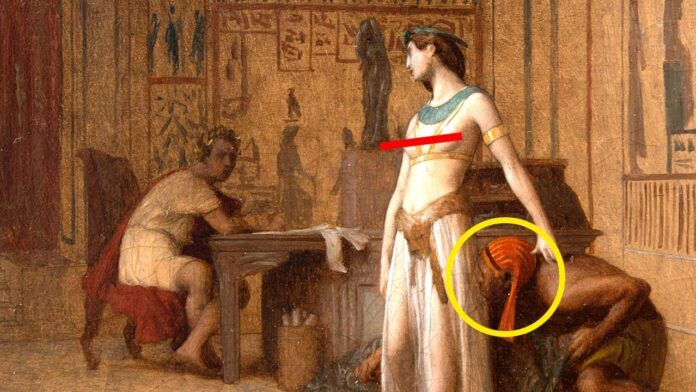Slavery in Ancient Egypt: Unravelling the Myths and Realities
The story of the Israelites in Egypt is one of the most well-known accounts of slavery in ancient history. According to biblical tradition, the Israelites were enslaved and forced to labour under the Pharaoh’s rule. Some versions of the story suggest they played a role in constructing Egypt’s most iconic structures—the pyramids. However, historians and archaeologists have found no evidence to support the claim that the Israelites built the pyramids. In fact, the pyramids, especially those at Giza, were built centuries before the Israelites are believed to have arrived in Egypt.
Additionally, the Bible itself mentions that the Israelites made bricks, often under harsh conditions. These bricks were composed of mud and straw, suitable for standard construction but not for pyramid-building. The pyramids were built using massive limestone and granite blocks, far beyond the material and architectural scope of mudbrick. This key difference casts further doubt on the idea that enslaved Israelites had a role in building the pyramids. Instead, modern research suggests a much different labour force was responsible for Egypt’s great monuments.
Rethinking the Pyramid Builders
One of the most persistent myths about ancient Egypt is that slaves built the pyramids. In truth, archaeological evidence tells a different story. Researchers now believe that farmers constructed the pyramids during the annual Nile flooding season. When the floodwaters covered their fields, these farmers worked on royal projects instead of farming. These workers received food, shelter, and medical care, which suggests their labour was valued and not coerced in the way we often associate with slavery.
For a deeper look at these findings, watch this informative video on pyramid construction, which explores the daily lives of these workers.
Understanding Types of Slavery
Slavery in Ancient Egypt took several forms. Chattel slavery was one form, where individuals were treated as property. These slaves often came from foreign wars and had little hope of freedom. Another type was bonded labour. In this case, Egyptians worked to repay debts or meet obligations. These individuals sometimes retained personal rights and could eventually gain their freedom.
A unique aspect of Egyptian belief introduced “Shabti slaves.” These were small statues placed in tombs to perform labour in the afterlife for the deceased. They were symbolic and not actual living slaves. This shows how deeply intertwined religion and labour were in the Egyptian worldview.
The Role of Forced Labour
Not all labourers in ancient Egypt were considered slaves by modern standards. Many people worked on public projects as a form of service to the state or the Pharaoh. These labourers often had families, homes, and structured work environments. Rather than being owned, they fulfilled what was seen as a duty or civic responsibility.
This kind of labour may seem foreign to us today, but in ancient Egypt, it was often seen as honourable. Workers on state projects helped build temples, tombs, and irrigation canals. Their work helped maintain the prosperity of the kingdom.
Living Conditions of Workers
Evidence from workers’ villages near the pyramids reveals surprising details. These communities had bakeries, breweries, and medical facilities. Workers received rations and care, which indicates they were not disposable tools. Although their lives were hard, they had some level of security and dignity.
Skilled workers, such as artisans and stone carvers, enjoyed even better conditions. They lived in well-built houses and had access to various resources. This suggests that social class and skill level played significant roles in determining the quality of life.
Cultural Perspectives on Slavery
Slavery in Ancient Egypt did not carry the same cultural meaning as slavery in modern times. There was a broad spectrum of labour and social obligation. Many people accepted service to the Pharaoh or temple as a duty, not a punishment. Religious beliefs also influenced how Egyptians viewed work and obligation, especially in the afterlife.
The society’s structure supported a hierarchy that allowed for mobility in some cases. A bonded worker could eventually earn freedom or rise in status. While certainly unequal, the system was not entirely based on cruelty or ownership.
Revisiting Our Assumptions
The term “slavery” brings strong emotional responses, shaped by modern history. However, slavery in Ancient Egypt was more complex and diverse. It ranged from chattel slavery to respected service roles. Understanding this distinction allows for a deeper appreciation of Egypt’s social and cultural systems.
Rather than imagining pyramid builders as broken, starving slaves, we now see them as seasonal workers fulfilling a state duty. Their lives were challenging, but not devoid of meaning or support.
Slavery in Ancient Egypt was a layered institution. By exploring the types of labour, living conditions, and cultural context, we gain a fuller picture of how ancient Egyptians lived and worked. Let us challenge long-held myths and look at history with a clearer, more informed perspective.


 Search The Bible the way you have always wanted to.
Search The Bible the way you have always wanted to.
 The most complete Bible study Platform. Start you Free trial Now!
The most complete Bible study Platform. Start you Free trial Now!



